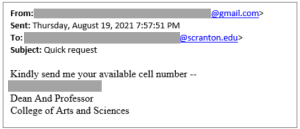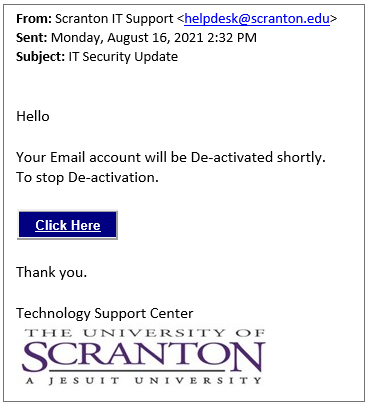 2022: Celebrating 25 years of Desktop Productivity with Microsoft 365
2022: Celebrating 25 years of Desktop Productivity with Microsoft 365
Although Microsoft Office was initially released in 1990, it was the release of Office 97 that established the suite of products as the premiere desktop productivity package. At that time, when computers weren’t as common in the workplace as they are today, the professional version of the desktop productivity package included five primary applications, a word processor (Word), a spreadsheet editor (Excel), a presentation program (PowerPoint), a database manager (Access) and a personal information manager (Outlook). Throughout the past 25 years, Microsoft released nine major versions of Office for Windows and eight major versions for Mac. These “on-premise” releases of Microsoft Office, the most recent being Office 2019, are what most people think of when thinking about Microsoft Office.
In 2010, facing stiff competition from Google Apps (a cloud-based, productivity and collaboration suite), Microsoft began the gradual shift to offering Microsoft Office as a service on a subscription basis. This subscription-based service would extend the use of Office products into the cloud and across mobile platforms including iOS and Android. In 2020, this product was rebranded as Microsoft 365.
In 2022, due to changes in the University’s licensing of Microsoft products, Information Technology will start shifting computers from yesteryear’s on-premise version of Microsoft Office 2019 to the modern work experience of Microsoft 365. The productivity applications you’ve come to rely on (e.g., Word, Excel, PowerPoint, Outlook, OneNote, OneDrive, Teams) will still be available on each and every classroom, lab and office computer. The experience of using these applications will remain familiar and consistent.
Microsoft 365 Resources and Training
Microsoft 365 Learning Resources (authentication required) has been customized by the University’s Division of Information Technology team. This resource is curated to provide our campus with updated training information for the products that are available on our campus.
Power Automate is available on our campus. For resources, visit Microsoft Power Automate documentation.
The Microsoft 365 Training website combines video and step-by-step training with template, quick starts and easy handouts.
Teams Beginner Training for Faculty and Staff
Through Bookings, you can reserve Microsoft Teams training to review Teams and answer any other M365 program questions. Feel free to bring a colleague. This one-hour session is in-person in AMH 109. This is a beginner session. Click here for online resources and training.
Windows 11
Windows 11, the newest, major version of Microsoft’s operating system was released on October 5, 2021. For an organization, the release of any new operating system can be challenging as resources need to be allocated to confirm that legacy hardware and software is compatible with the new operating system. Processes for deploying and managing the new operating system also need to be verified.
Information Technology is preparing its strategy for migrating to Windows 11. More information about this strategy and the availability of Windows 11 will be communicated in 2022. In the meantime, rest assured that your Windows 10 computer will continue being secured, maintained and managed.

 Duo Security, the University’s two-factor authentication provider, has recently updated the user interface for the mobile app for Android and iOS. Depending on your device settings, your mobile app will automatically update or you will need to manually initiate the update.
Duo Security, the University’s two-factor authentication provider, has recently updated the user interface for the mobile app for Android and iOS. Depending on your device settings, your mobile app will automatically update or you will need to manually initiate the update.


 IT will be removing access to the Xythos client (Royal Drive or R: drive) from all Windows computers in the coming weeks. If you are still scanning from your multi-function device to Royal drive, you can access your scanned files by going to royaldrive.scranton.edu from any browser.
IT will be removing access to the Xythos client (Royal Drive or R: drive) from all Windows computers in the coming weeks. If you are still scanning from your multi-function device to Royal drive, you can access your scanned files by going to royaldrive.scranton.edu from any browser.
 The 2020–21 global chip shortage is an ongoing crisis in which the demand for integrated circuits is greater than the supply. The chips are often called semiconductors or microchips and function as the brains of our electronics. This shortage is impacting more than 169 industries and has led to major shortages for most electrical devices. There are chips in nearly everything electric you own, from your phone to your computer to your car. There are even chips in items you wouldn’t expect, such as your washing machine, electric toothbrush and refrigerator.
The 2020–21 global chip shortage is an ongoing crisis in which the demand for integrated circuits is greater than the supply. The chips are often called semiconductors or microchips and function as the brains of our electronics. This shortage is impacting more than 169 industries and has led to major shortages for most electrical devices. There are chips in nearly everything electric you own, from your phone to your computer to your car. There are even chips in items you wouldn’t expect, such as your washing machine, electric toothbrush and refrigerator.

 The return to campus in Fall 2020 posed new challenges for students, staff and faculty alike. The need for students to quarantine and isolate created not only logistical tasks for the Division of Student Life, but also student absence reporting responsibilities in the Division of Academic Affairs.
The return to campus in Fall 2020 posed new challenges for students, staff and faculty alike. The need for students to quarantine and isolate created not only logistical tasks for the Division of Student Life, but also student absence reporting responsibilities in the Division of Academic Affairs.